Daffodils will naturally reproduce by creating baby bulbs that remain attached to the parent. But they will definitely grow stronger if you divide them.
The downside of this quiet reproduction is that they can crowd themselves out and some of the babes will remain flowerless — being unable to compete for the moisture and nutrients from the dominant parents.
This is where human intervention can really help by manually dividing them. The result is well worth the effort as you’ll get a rapidly increasing collection of these splendid beacons of spring.
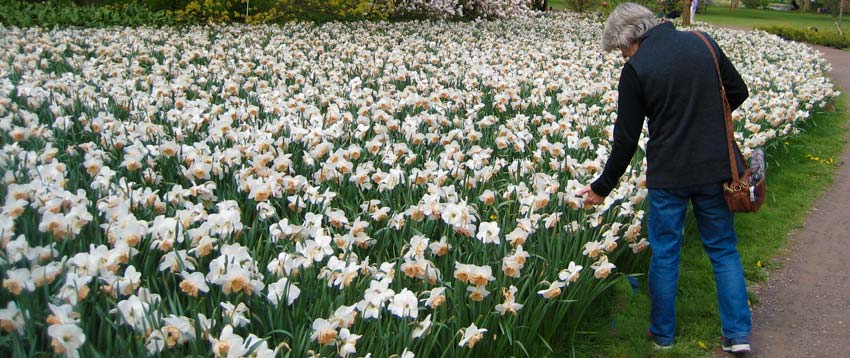 Daffodils en-masse in St James Park, London
Daffodils en-masse in St James Park, London#1. Dig them up:
Whether they are in the ground or in pots, the foliage of daffodils will die off when the flowering season is over.
Let them die right back, tieing the brown leaves helps keep them tidy while you wait.
Its important to let the foliage dry and die naturally — if you snip off the green foliage to soon it will interrupt the natural hibernation patterns of the bulb as it is using this time to accumulate food for the next season and much of this moves down from the leaves back to the bulb..
Use a fork and dig it in at an angle a few cms away from the plant and lever them up and out gently. (you do this to avoid spearing the bulbs which are still tender).
Shake off the soil and you can either divide and re-plant immediately or you can let them dry as you store them over summer.
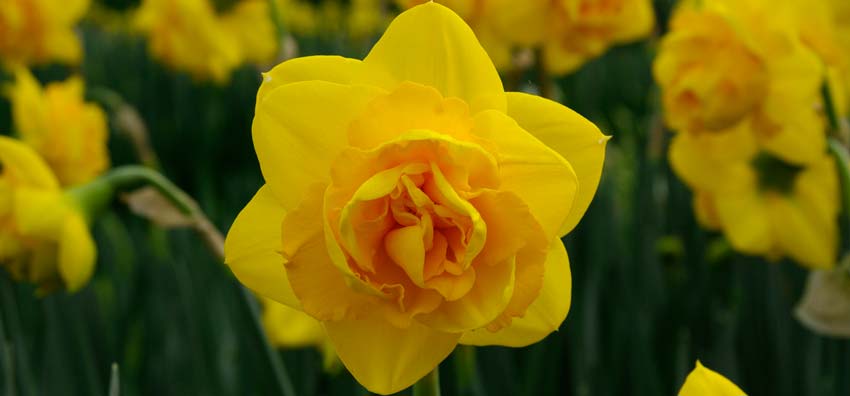 Narcissus ‘Heamoor’.
Narcissus ‘Heamoor’.#2. Drying or Curing the Bulbs:
This is not unlike drying a woolen jumper that’s been washed — they need plenty of air around them.
A good method is to lay them in a single layer on a suspended fly screen or other fine mesh support like narrow grade chicken wire— this lets the air get all around the bulb.
Let them dry for a week or so then place them in a brown paper bag and store them in a dark but well ventilated cupboard until autumn.
For those who live in temperate zones, placing the bag in the fridge for a week or two will also help the bulbs get ready for spring.
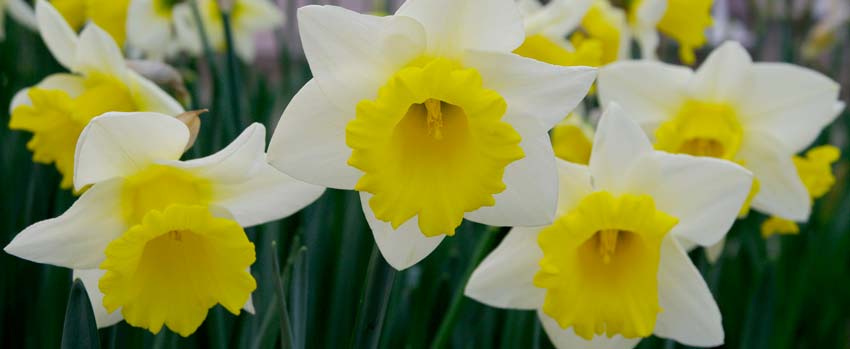 Narcissus ‘Cornish King’
Narcissus ‘Cornish King’#3. Dividing Bulbs:
In autumn when it's time to plant, take the bulb clusters and gently prize the young ones away from the parent.
The large ones will most likely produce the best flowers so when you re-plant, make sure you mix them up so as to get an even floral display.
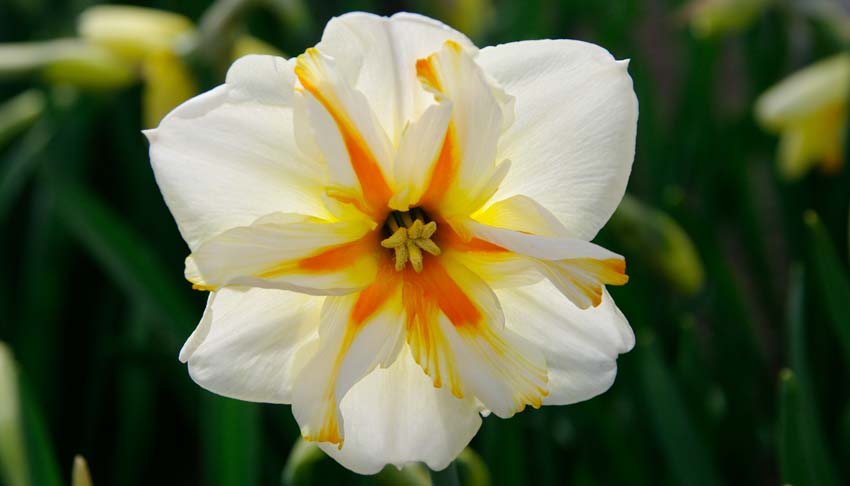 Narcissus ‘Trepolo’
Narcissus ‘Trepolo’#4. Re-Planting:
First loosen the soil and work in some compost and a little organic bulb fertiliser like Blood & Bone.
Then, using a dibber to make a hole, push in the bulb to a depth of about 10-15cms and cover with soil and firm down.
If your location is lawn then a bulb planter is very useful and saves a lot of effort. Simply push it into the turf and pull upwards - whereby it neatly removes a conical plug of soil to just the right depth.
Pop your bulb in (pointy end up) and gently crumble the soil back over the top of it, firm it down and the perfectly cut divot will fit like a perfect lid.
Finally, a little water will help get things going — but you’ll need to patient — at least until spring.
Note: Daffodils only need to be divided every three to four years.
The bulb planter illustrated is by Wolf Garten and is available in the GardensOnLine shop. We also have a variety of dibbers by Burgon & Ball of the UK.
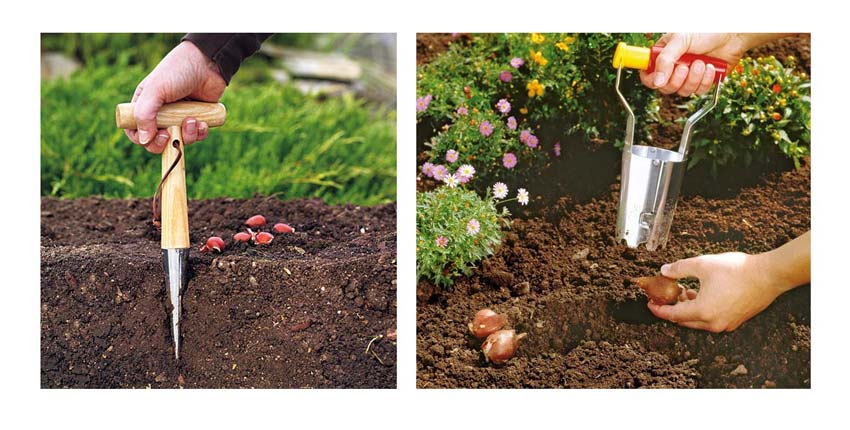 Dibber (L) - Bulb Planter (R)
Dibber (L) - Bulb Planter (R)Clearly, the public gardens department of Westminster City Council in London know all about this age old technique. The fabulous carpet of daffodils below was photographed in St James Park, just down the road from Buckingham Palace.
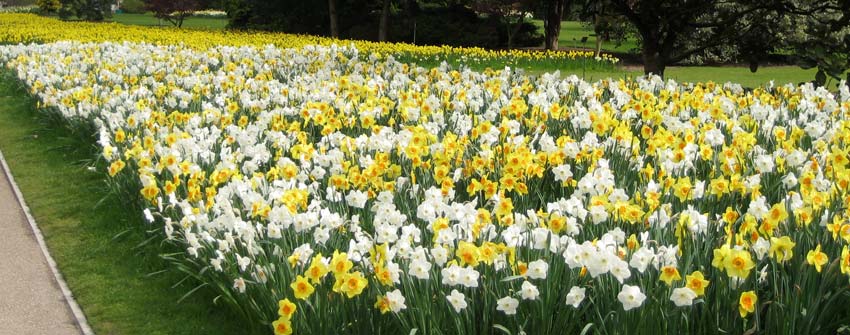 Narcissus en-masse
Narcissus en-masse